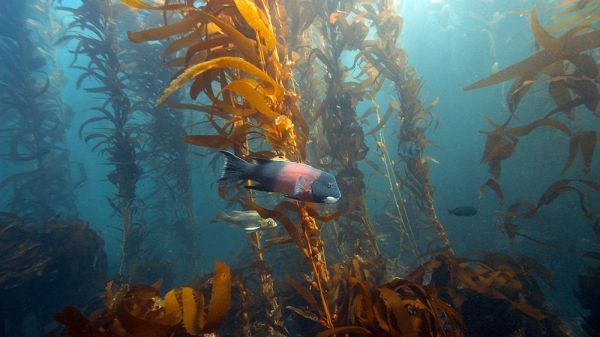Translucent, aqua-tinted water surrounds scuba divers as they weave through trailing kelp fronds at Channel Islands National Marine Sanctuary. Above them the surface of the Pacific Ocean is in constant motion. Below the ocean surface, towering stands of giant kelp grow in the cool, nutrient-rich upwelling currents of the national marine sanctuary. While wandering through this seemingly endless underwater forest, lucky divers in Channel Islands National Marine Sanctuary just may find themselves face to face with the elusive king of this watery realm – the giant sea bass.
Giant sea bass are at the top of the food web in the kelp forest ecosystem. They are massive animals: the biggest of them can weigh 800 pounds and measure over seven feet in length. Giant sea bass will eat just about anything they can fit in their gaping mouths, including lobsters, rays, and small sharks.
For such a significant species, relatively little is known about these kings of the kelp dominion. The species population has been very low in the past several decades due to a long history of overfishing. The fish is listed as “critically endangered” by the International Union for the Conservation of Nature (IUCN). The rarity of seeing one in the wild has made the giant sea bass a difficult subject to study.
At Channel Islands National Marine Sanctuary there have been recent consistent sightings of the enormous fish. A new multi-year research project led by Ryan Freedman and other sanctuary researchers will study this population using a telemetry array and satellite tags. A local collaboration of researchers plan to look at all aspects of this animal’s life in order to better understand its role in the marine environment, as well as how humans affect it.
Continue reading at NOAA.
Image via NOAA.


